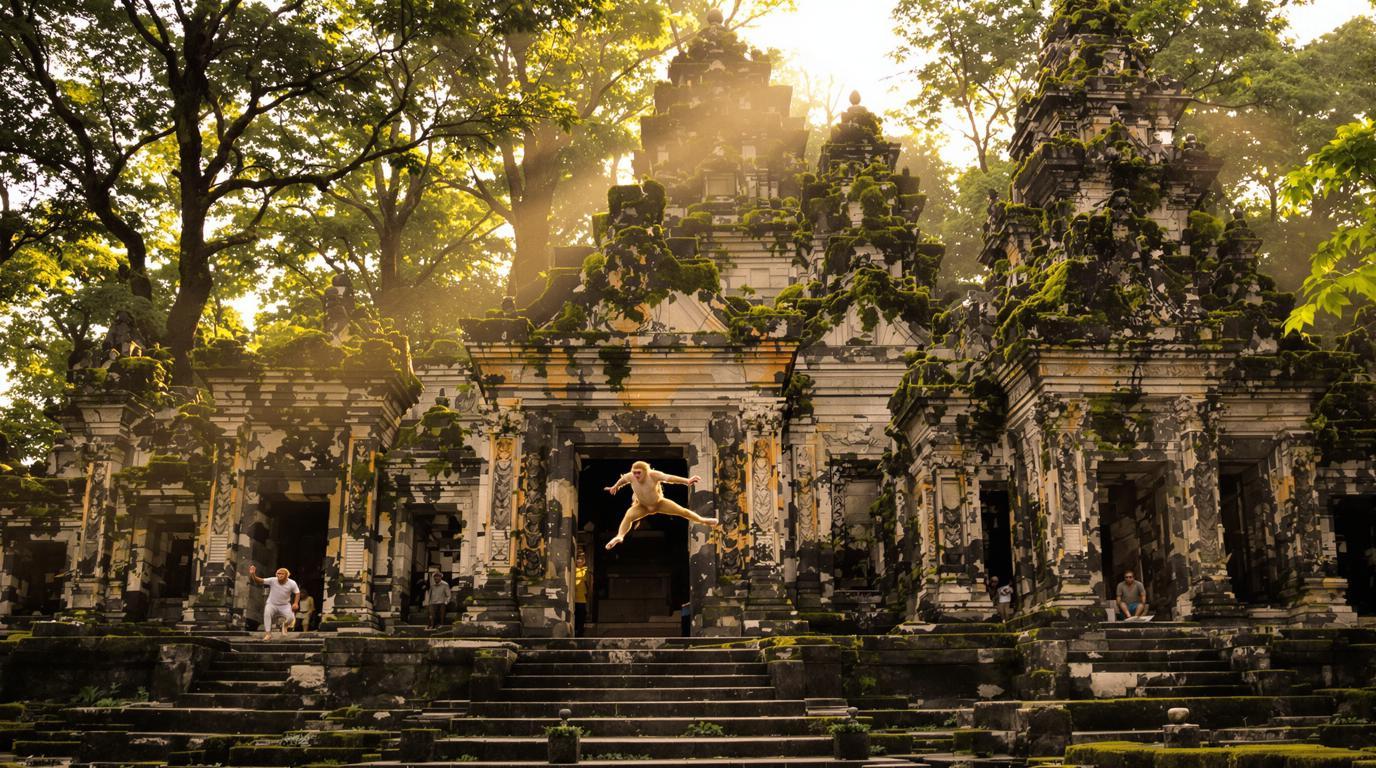Beyond Bali’s beaches lies a cultural haven that captivates the soul. Ubud, positioned precisely at 8.5069° S, 115.2625° E in Indonesia’s verdant interior, isn’t just another destination – it’s the island’s beating artistic heart where ancient traditions flourish alongside lush landscapes.
Where emerald rice terraces cascade like nature’s stairways to heaven
The Tegallalang Rice Terraces unfold like a living masterpiece, their undulating patterns carved into hillsides by generations of farmers. During the dry season (May to September), these emerald amphitheaters shine with particular brilliance under clear skies. Early morning visitors might glimpse farmers tending crops using techniques unchanged for centuries, their silhouettes creating perfect photographic compositions against the rising sun.
The sacred monkey forest: where 700 macaques rule an ancient sanctuary
More than a tourist attraction, the Sacred Monkey Forest serves as a living laboratory for the delicate balance between nature, humanity, and spirituality. These long-tailed residents – believed to protect the temples from evil spirits – swing through towering nutmeg trees and ancient moss-covered statues. The forest’s three Hindu temples date back to the 14th century, creating a mystical atmosphere reminiscent of hidden natural paradises found elsewhere in Southeast Asia.
A culinary adventure through Balinese flavors
Ubud’s food scene ranges from humble warungs to elegant restaurants overlooking jungle ravines. The signature dish, babi guling (suckling pig), represents a smoky, crispy celebration reserved traditionally for ceremonies but now available to visitors. For a deeper dive into local cuisine, cooking classes teach the art of blending the complex spice paste called “base gede” – the foundation of Balinese cooking.
“In Ubud, food isn’t just sustenance – it’s ceremony, connection, and offering. When you learn to cook here, you’re learning our history,” explains Wayan Suartana, a local chef who teaches traditional cooking methods.
Where water purifies both body and spirit
The sacred springs of Tirta Empul draw pilgrims and travelers alike. Here, in crystalline pools fed by natural springs, Balinese Hindus perform melukat (ritual purification). The faithful move methodically through the fountains, each representing a different blessing. This spiritual oasis provides insight into Bali’s unique blend of Hinduism, something that continues on many Indonesian islands where ancient traditions remain vibrant.
The artistic soul that flourishes in quiet lanes
Ubud’s artistic heritage blossomed in the 1930s when foreign artists like Walter Spies and Rudolf Bonnet established the Pita Maha artists cooperative with local painter I Gusti Nyoman Lempad. Today, galleries and workshops line the streets, offering everything from intricate wood carvings to contemporary paintings. The Ubud Art Market buzzes with creative energy, particularly in the golden hours before sunset.
Balinese dance performances that tell ancient epics
Evenings in Ubud pulse with hypnotic performances. The Legong dance, with its precise finger movements and elaborate golden headdresses, tells stories of royal courts. Meanwhile, the all-male Kecak dance, performed without musical instruments – only a chorus of chanting voices – creates an atmosphere similar to ancient ceremonial sites worldwide.
“Each movement, each costume element has meaning passed down through generations. When I dance, I become a vessel for stories older than my grandmother’s grandmother,” shares Ni Wayan Sriani, a Legong dancer since childhood.
Where wellness traditions blend ancient wisdom with modern practices
Ubud has emerged as a global wellness hub, with practices rooted in Balinese healing traditions. Treatments incorporate local ingredients like coffee scrubs, volcanic clay, and fragrant frangipani. The Campuhan Ridge Walk offers meditative morning strolls through undulating hills with panoramic views rivaling famous Mediterranean landscapes.
A town where ancient ceremonies punctuate daily life
Visit between May and September to witness spectacular temple anniversaries and ceremonies. Streets transform with processions of women balancing towering offerings atop their heads, gamelan orchestras providing rhythmic accompaniment. During Galungan celebrations, bamboo poles decorated with young coconut leaves (penjor) line every street, creating an atmosphere akin to medieval European festival streets.
Ubud isn’t merely a destination but a transformative experience where daily routines dissolve into something more profound. In this Balinese heartland, travelers discover not just spectacular scenery but the pulse of an ancient culture that continues to thrive in harmony with the modern world.
